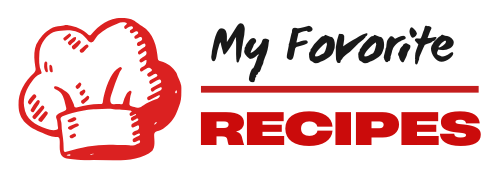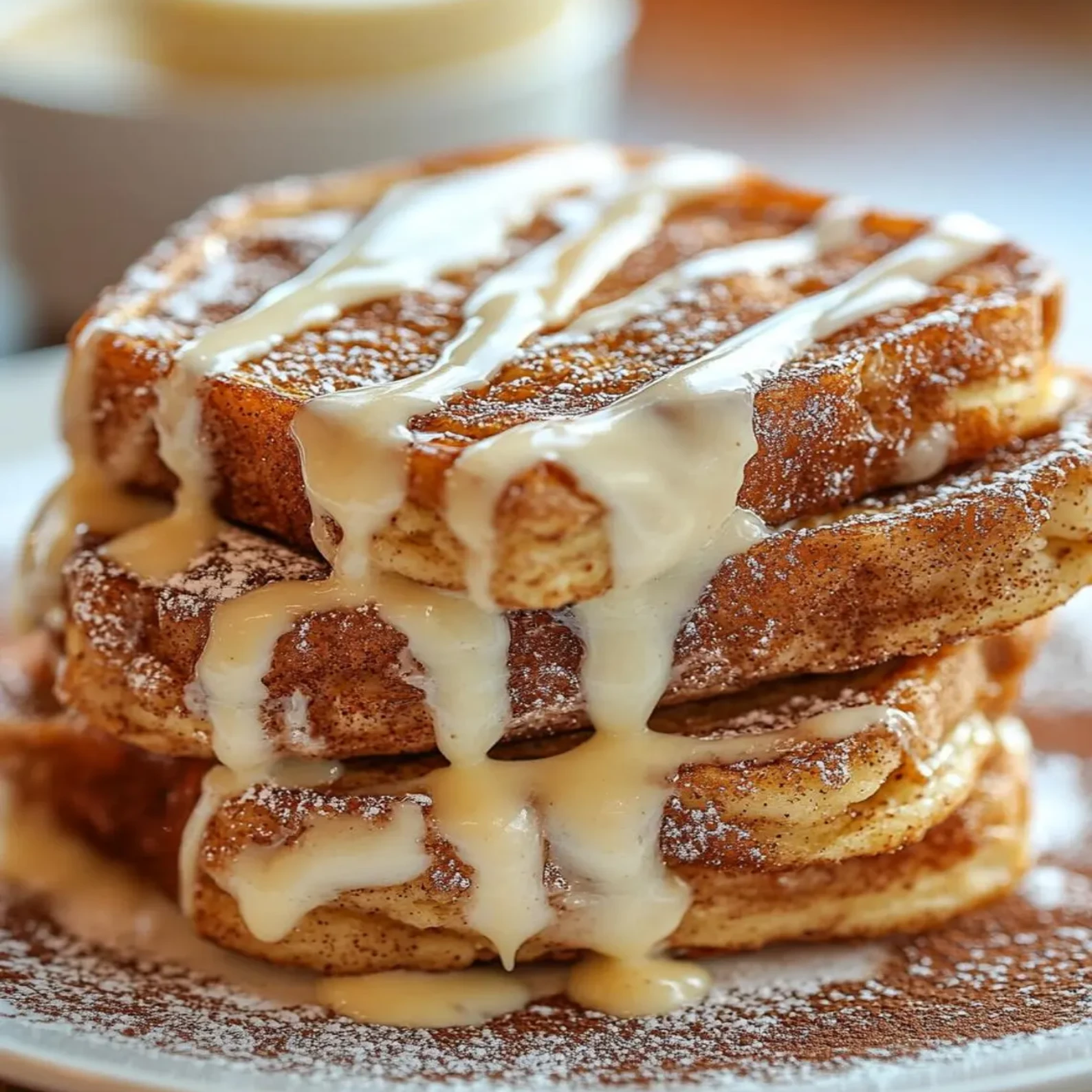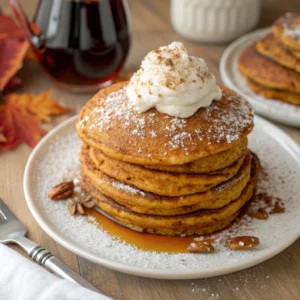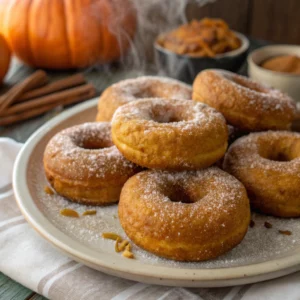Have you ever wondered why restaurant French toast sticks taste so much better than homemade ones? Is it a secret ingredient or special technique that transforms ordinary bread into those crispy-on-the-outside, soft-on-the-inside delights that both kids and adults crave?
The perfect Cinnamon Sugar French toast sticks combine the nostalgic comfort of breakfast with the fun, dippable quality of a snack. This recipe transforms ordinary bread into sweet, portable delights that will elevate your breakfast game instantly.
Ingredients List
- 8 slices thick-cut bread (Texas toast or brioche work beautifully)
- 4 large eggs
- 1/2 cup whole milk (substitute almond milk for a dairy-free option)
- 1 teaspoon pure vanilla extract
- 1/4 teaspoon salt
- 1 tablespoon cinnamon french toast sticks
- 1/2 cup granulated sugar
- 2 tablespoons ground cinnamon (for coating)
- 4 tablespoons unsalted butter (for frying)
- Maple syrup, fruit compote, or chocolate sauce (for dipping)
For a richer flavor profile, consider using challah bread or adding a teaspoon of orange zest to the egg mixture. The aromatic citrus notes complement the warm cinnamon beautifully, creating layers of fragrance that will fill your kitchen.
Timing
- Preparation Time: 15 minutes (includes cutting bread and mixing ingredients)
- Cooking Time: 10-12 minutes (working in batches)
- Total Time: 25-30 minutes, which is 40% faster than traditional French toast recipes that require longer soaking times and individual slice preparation.
Step-by-Step Instructions
Step 1: Prepare the Bread
Start with slightly stale bread for best results – it absorbs the custard mixture without becoming soggy. Cut each slice of bread into 3-4 even strips, depending on the size of your bread. Thicker sticks hold up better during cooking and provide that satisfying bite.
Step 2: Create the Custard Mixture
In a wide, shallow bowl, whisk together eggs, milk, vanilla extract, salt, and 1 tablespoon of cinnamon until completely combined. The consistency should be smooth with no streaks of egg white visible. This uniform mixture ensures even flavor throughout your Cinnamon Sugar French toast sticks.
Step 3: Prepare the Cinnamon Sugar Coating
In a separate shallow dish, mix the granulated sugar with the remaining 2 tablespoons of ground cinnamon. Stir thoroughly to ensure even distribution of the cinnamon throughout the sugar. This sweet, aromatic coating creates that irresistible crunchy exterior.
Step 4: Dip and Soak
- Dip each bread stick into the egg mixture, allowing it to soak for about 15-20 seconds per side.
- Ensure all sides are coated, but don’t oversoak – this prevents soggy centers.
- Let excess mixture drip off before cooking.
Pro tip: Work in small batches, only soaking what you can immediately cook. This prevents the bread from becoming too saturated and falling apart during cooking.
Step 5: Cook to Golden Perfection
Heat a large non-stick skillet or griddle over medium heat. Add 1 tablespoon of butter and allow it to melt completely. Place the soaked bread sticks in the pan, leaving space between each piece. Cook for 2-3 minutes per side until golden brown and slightly crisp.
For extra crispiness, avoid overcrowding the pan – this creates steam that can make your sticks soggy rather than crisp. Work in batches, adding more butter as needed between batches.
Step 6: Apply the Cinnamon Sugar Coating
While the sticks are still hot, immediately roll them in the cinnamon-sugar mixture, ensuring all sides are well coated. The residual heat helps the sugar adhere better to create that delectable sweet crust that makes Cinnamon Sugar French toast sticks so irresistible.
Step 7: Serve and Enjoy
Arrange the finished sticks on a serving plate. Serve immediately while still warm with your favorite dipping sauces on the side. The contrast between the warm, soft interior and the sweet, crispy exterior is what makes this breakfast treat so special.
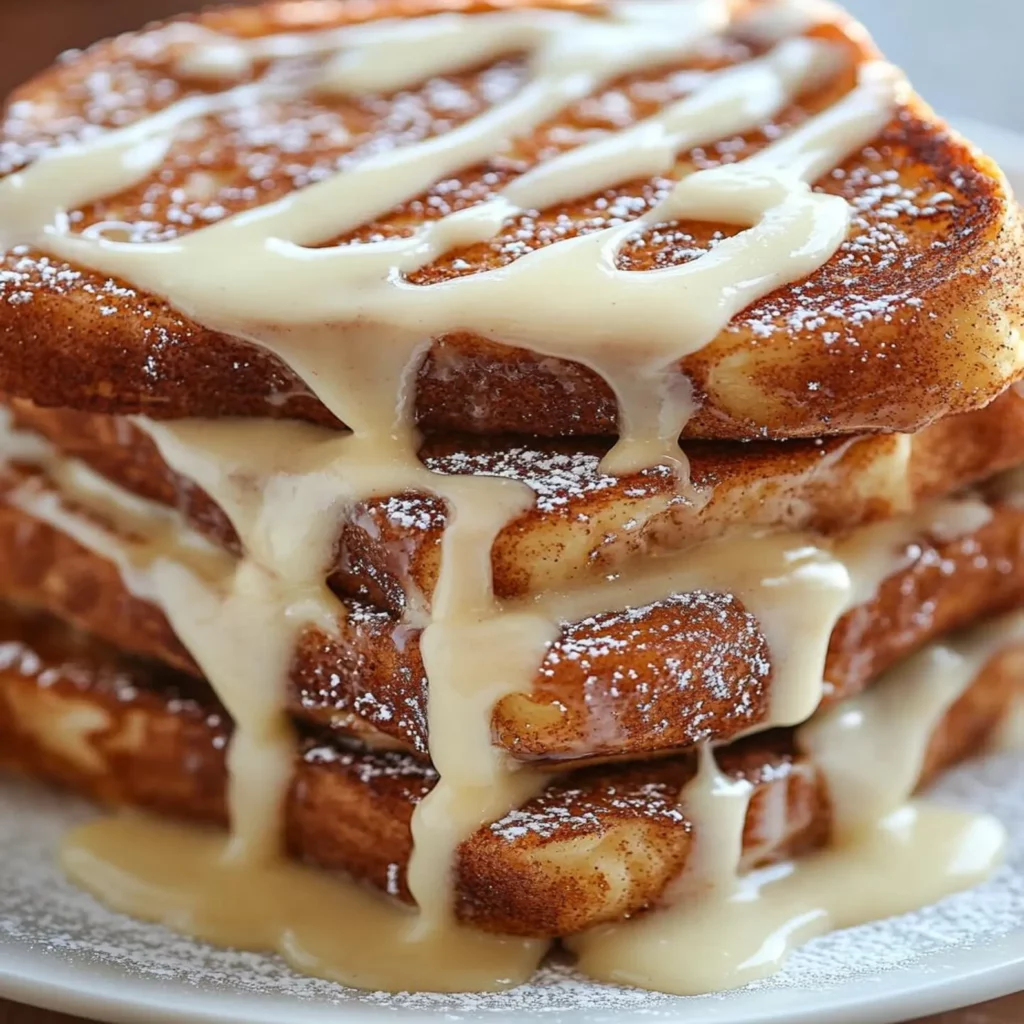
Nutritional Information
Per Serving (4 sticks, approximately 2 slices of bread):
Calories: 320 | Protein: 9g | Carbohydrates: 42g | Dietary Fiber: 2g | Sugars: 18g | Fat: 14g | Saturated Fat: 7g | Cholesterol: 115mg | Sodium: 340mg
This recipe provides approximately 15% of your daily calcium needs and 12% of your daily iron requirements. The egg coating adds valuable protein, making this a more balanced breakfast option than many sweet morning alternatives that can be pure carbohydrates.
Healthier Alternatives for the Recipe
For a lighter version that reduces calories by nearly 30%, try these modifications:
Substitute whole wheat bread for white bread to increase fiber content and create a more filling breakfast with a lower glycemic index. The nuttier flavor profile pairs beautifully with the warm cinnamon.
Replace half the sugar with monk fruit sweetener or erythritol for the same sweetness with fewer calories. These natural alternatives maintain the classic taste while reducing the overall sugar impact.
Use egg whites instead of whole eggs (2 egg whites for each whole egg) and replace whole milk with unsweetened almond milk to reduce fat and calories while maintaining the crucial custard-like texture.
For those following specific dietary plans, this recipe can be made gluten-free by using certified gluten-free bread, and dairy-free by substituting plant-based milk and coconut oil instead of butter.
Serving Suggestions
Create a French toast stick bar for brunch gatherings with various dipping options: warm maple syrup, fresh berry compote, chocolate hazelnut spread, vanilla yogurt, or apple butter. This interactive approach makes breakfast more engaging for guests of all ages.
For a complete breakfast, serve alongside a protein source like Greek yogurt or scrambled eggs to balance the carbohydrates with satisfying protein that will keep you fuller longer.
Turn these sticks into a special dessert by serving them with a scoop of vanilla ice cream and a drizzle of caramel sauce. The contrast between the warm toast sticks and cold ice cream creates a delightful temperature play.
Common Mistakes to Avoid
- Using fresh, soft bread – This absorbs too much egg mixture and becomes soggy. Day-old or slightly stale bread maintains structural integrity better during cooking.
- Soaking the bread too long – A quick 15-20 second dip is sufficient; longer soaking leads to soggy centers that won’t crisp up properly.
- Cooking at too high heat – This burns the exterior before the interior cooks through. Medium heat allows for even cooking throughout.
- Adding cinnamon directly to the egg mixture – While some cinnamon in the egg mixture adds flavor, too much can create clumps. Save most of it for the sugar coating for better texture and appearance.
- Not preheating the pan adequately – A properly heated pan creates that initial sear that prevents the bread from absorbing too much butter and becoming greasy.
Storing Tips for the Recipe
These Cinnamon Sugar French toast sticks can be prepared ahead and stored for convenient breakfasts throughout the week. Allow them to cool completely, then store in an airtight container with parchment paper between layers to prevent sticking.
Refrigerated sticks will keep well for up to 3 days. To reheat, place them in a toaster oven at 350°F for 4-5 minutes until crisp and heated through. Avoid microwave reheating as it makes them soggy.
For longer storage, freeze the cooked sticks in a single layer on a baking sheet, then transfer to a freezer bag once solid. They’ll maintain quality for up to 2 months. Reheat frozen sticks directly in a toaster oven for 6-8 minutes without thawing.
For meal prep, you can prepare the egg mixture and cinnamon sugar coating up to 24 hours in advance and store them separately in the refrigerator. This cuts morning preparation time in half.
Conclusion
These Cinnamon Sugar French Toast Sticks transform an ordinary breakfast into something extraordinary with minimal effort. The perfect balance of crispy exterior and soft, custard-like interior makes them irresistible to both children and adults alike.
Have you tried making these delicious breakfast treats? Share your experience in the comments below! Did you try any creative variations or dipping sauces? We’d love to hear how you made this recipe your own. And if you’re looking for more breakfast inspiration, check out our other morning favorites on the blog!
